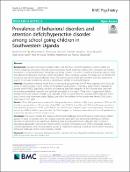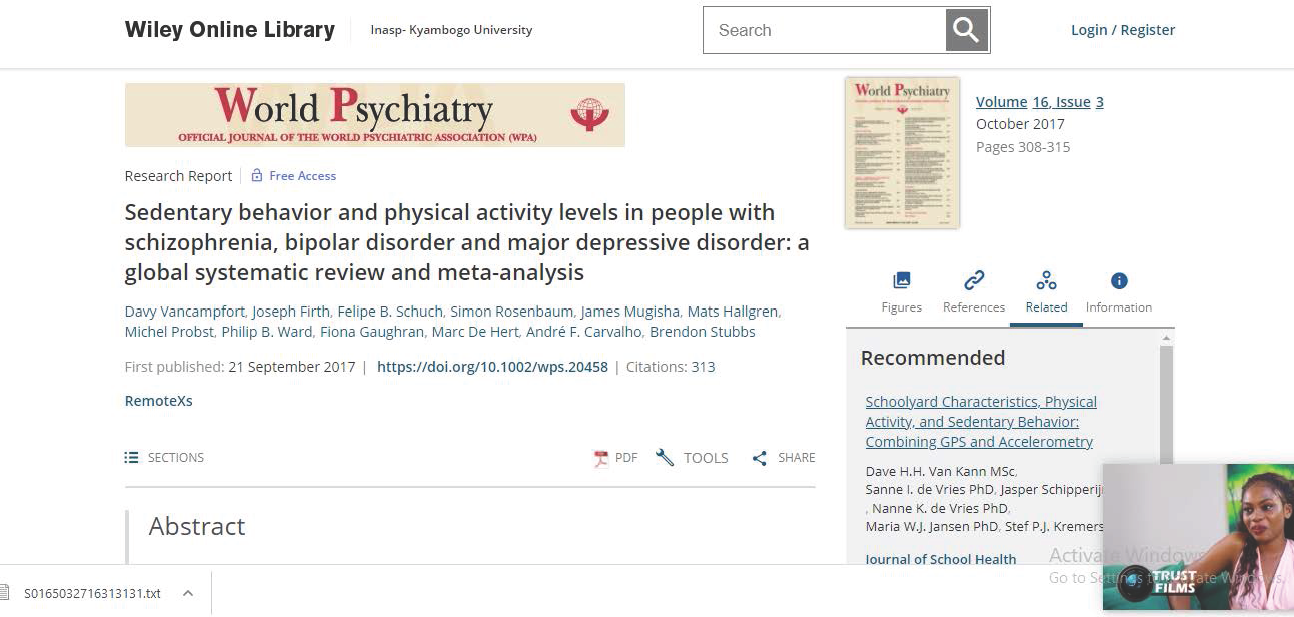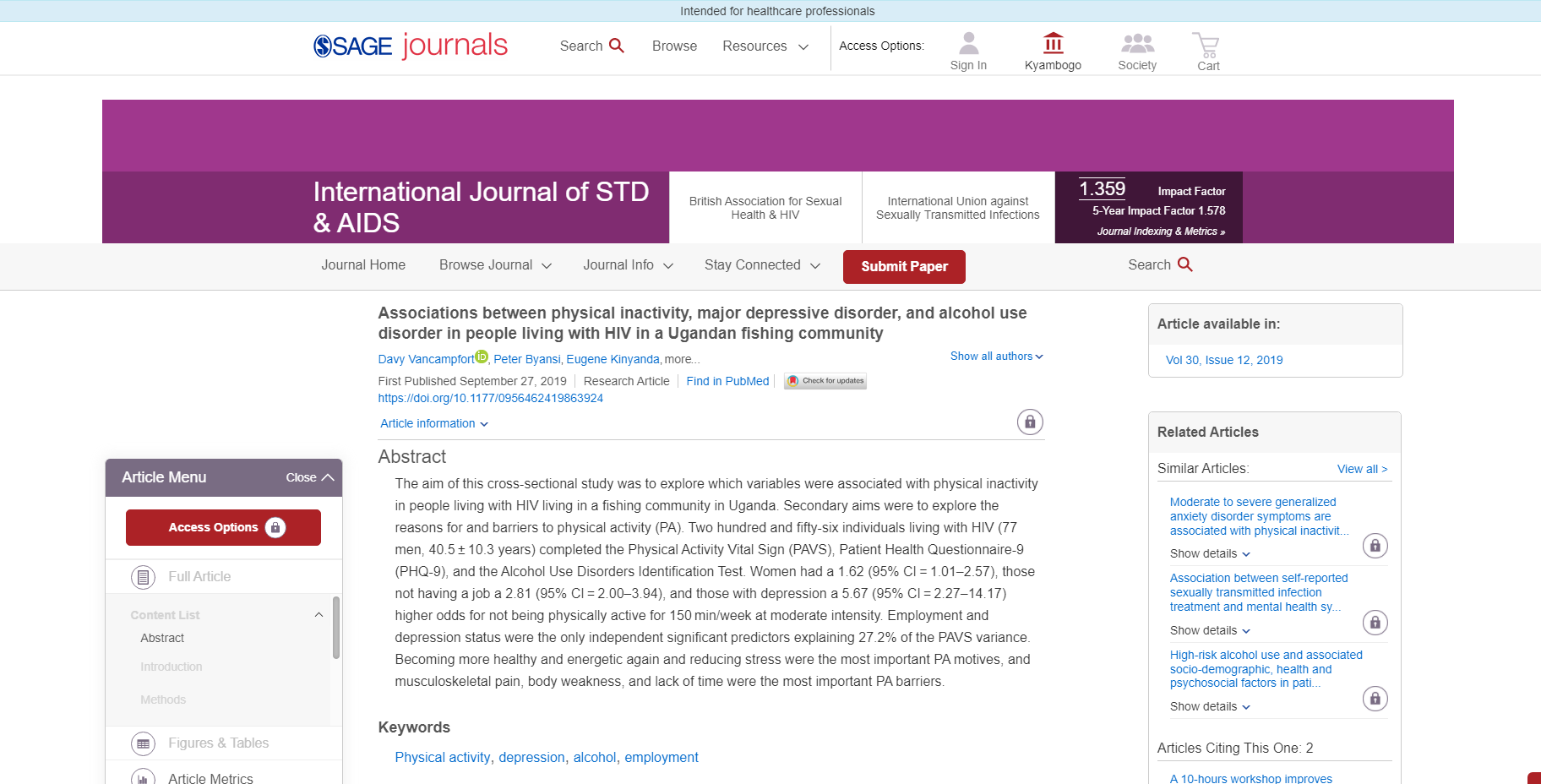| dc.contributor.author | Kivumbi, Apollo | |
| dc.contributor.author | Byansi, William | |
| dc.contributor.author | Damulira, Christopher | |
| dc.contributor.author | Namatovu, Phionah | |
| dc.contributor.author | Mugisha, James | |
| dc.contributor.author | Bahar, Ozge Sensoy | |
| dc.contributor.author | McKay, Mary M. | |
| dc.contributor.author | Hoagwood, Kimberly | |
| dc.contributor.author | Ssewamala, Fred M. | |
| dc.date.accessioned | 2022-01-24T07:43:26Z | |
| dc.date.available | 2022-01-24T07:43:26Z | |
| dc.date.issued | 2019-04-03 | |
| dc.identifier.citation | Kivumbi, Apollo... et al (2019). Prevalence of behavioral disorders and attention deficit/hyperactive disorder among school going children in Southwestern Uganda. Springer Nature: BMC Psychiatry volume. DOI https://doi.org/10.1186/s12888-019-2069-8. | en_US |
| dc.identifier.issn | ISSN: 1471-244X | |
| dc.identifier.uri | DOI https://doi.org/10.1186/s12888-019-2069-8 | |
| dc.identifier.uri | https://kyuspace.kyu.ac.ug/xmlui/handle/20.500.12504/279 | |
| dc.description | 8 p. | en_US |
| dc.description.abstract | Disruptive Behavioral Disorders (DBDs) and Attention Deficit/Hyperactivity Disorder (ADHD) are chronic, impairing, and costly child and adolescent mental health challenges which, when untreated, can result in disruptions in school performance, friendships and family relations. Yet, there is dearth of prevalence data on child and adolescent behavioral challenges within sub-Saharan Africa, including Uganda. This study aims to estimate the prevalence rate of behavioral challenges and ADHD among young school going children and early adolescents (ages 8–13 at study enrollment), utilizing a school-based sample in southwest Uganda.
Methods
We present screening results from a 5-year scale-up study titled SMART Africa-Uganda (2016–2021), set across 30 public primary schools located in the greater Masaka region in Uganda, a region heavily impacted by poverty and HIV/AIDS. Specifically, we draw on screening data from caregivers of 2434 children that used well-established standardized measures that had been pre-tested in the region. These were: 1) oppositional defiant disorder (ODD) and conduct disorder (CD) subscales of the Disruptive Behavior Disorders (DBD) scale; and 2) the Iowa Connors and Impairment scales. Slightly over half of the children in the sample were female (52%), with a mean age of 10.27 years.
Results
Of the 2434 participants screened for disruptive behaviors: 1) 6% (n = 136) scored positive on ODD and 2% (n = 42) scored positive on CD subscales of the DBD scale; 2) 9.61% (n = 234), and 2.67% (n = 65) were reported to have elevated symptoms of ODD and ADHD on the Iowa Connors caregiver report scale respectively. Twenty-five percent (n = 586) of children were described by their caregivers as having experienced some form of impairment in at least four domains of the Impairment scale.
Conclusion
The results indicate the presence of behavioral challenges and ADHD among school going children, aged 8–13 years, in Uganda. Given the negative outcomes associated with behavioral challenges as children transition to adolescence and adulthood, detecting these emerging behavioral challenges early is critical in developing appropriate interventions. School settings could be considered as one of the contextually-relevant, culturally-appropriate, and non-stigmatizing venues to implement screening procedures and to detect emerging behavioral challenges and to make necessary referrals. | en_US |
| dc.language.iso | en | en_US |
| dc.publisher | Springer Nature: BMC Psychiatry volume | en_US |
| dc.relation.ispartofseries | ;No.105 | |
| dc.subject | Prevalence | en_US |
| dc.subject | Disruptive behavior disorders | en_US |
| dc.subject | Conduct disorders | en_US |
| dc.subject | Oppositional defiant disorder | en_US |
| dc.subject | Attention deficit/hyperactive disorder | en_US |
| dc.subject | Adolescents | en_US |
| dc.title | Prevalence of behavioral disorders and attention deficit/hyperactive disorder among school going children in Southwestern Uganda | en_US |
| dc.type | Article | en_US |




